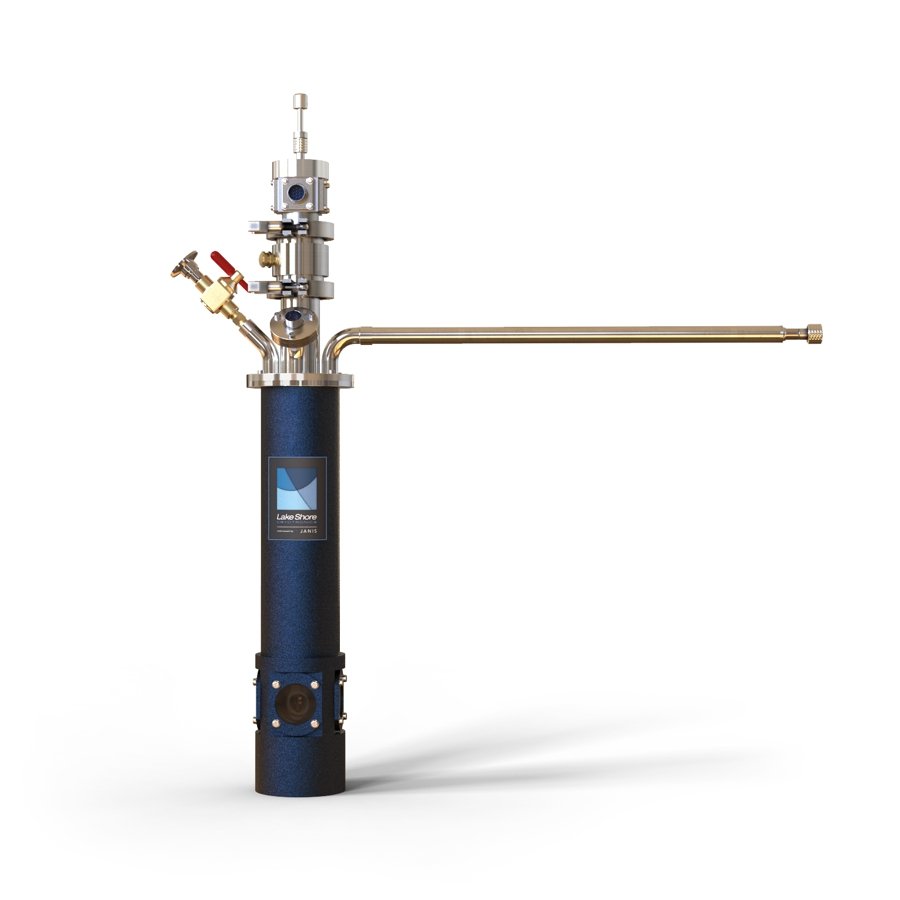
STVP-100 Optical Cryostat
Janis
Optical continuous flow cryostats with three standard sizes available, although, as with all Janis systems, these systems can be customized to suit your experiment. Systems with a 1.5" sample space are in stock for fast delivery.Standard Configuration
Designed for experiments requiring optical access to the sample, the Janis Research STVP-100 includes the following components:• Optical vacuum shroud
• Optical radiation shield
• Four (4) quartz window sets
• Optical sample holder
• Temperature sensor
• Pressure relief valve
• Sample positioner with one (1) 10-pin and one (1) 8-pin electrical feedthrough
• 6' superinsulated cryogen transfer line
• Control heater
• System test
Typical Applications
• Raman Spectroscopy• UV, VlS, IR, FTIR
• Optoelectric Effect
• Photoluminescence
• High Tc
• Microscopy
Specifications
Basic System Specifications - Continuous Flow Cryostats|
Specification |
SuperTranVP |
|
Temperature Range |
<2-325 K |
|
Initial Cooldown Time |
15 minutes |
|
Nominal Temperature Stability (with controller) |
50 mK or less |
|
Orientation |
vertical for <4.5 K |
|
System Weight (without transfer line) |
15 lbs (6.8 kg) |
|
Cryogen Consumption on Cooldown |
0.5L LHe (325 - 4.2 K) |
|
Nominal Cryogen Consumption Rate |
1.3 L/Hr LHe (5 K) |
|
NOTE: Specifications do not include optical or experimental heat loads and assume vertical orientation. |
|
Typical Cryogen Consumption of Optical SuperTran Cryostats

Other Configurations
• Compact vacuum shroud• Customized window materials
• Indium sealed cold windows
• Customized vacuum shroud lengths
• Large diameter sample space (see photo at right)
• Spectrometer mounting flange
• Isothermal zone sample tube (provides uniform sample temperature and enhanced operation with LN2)






